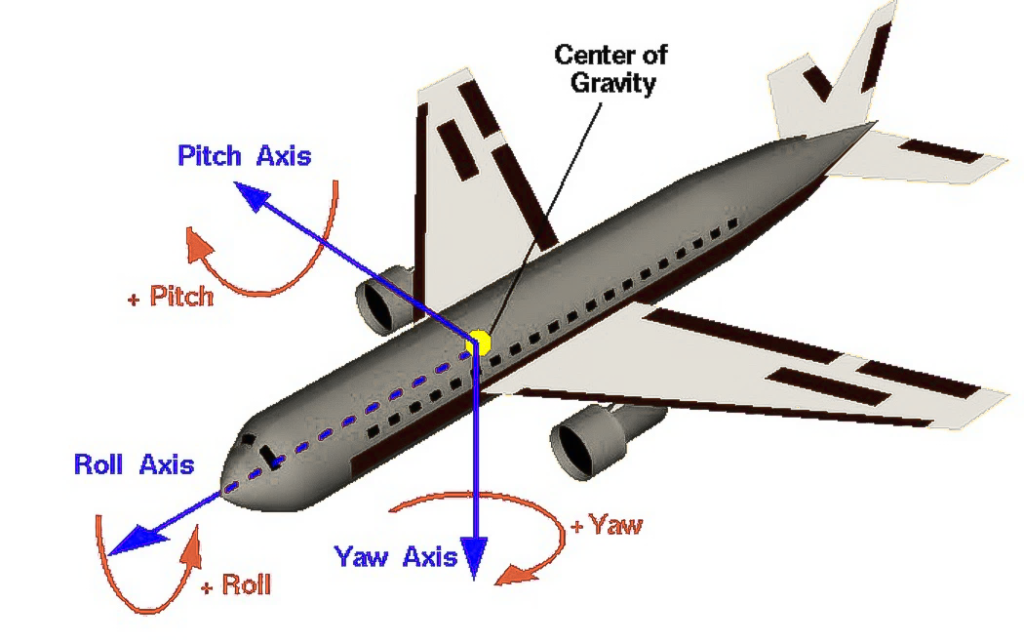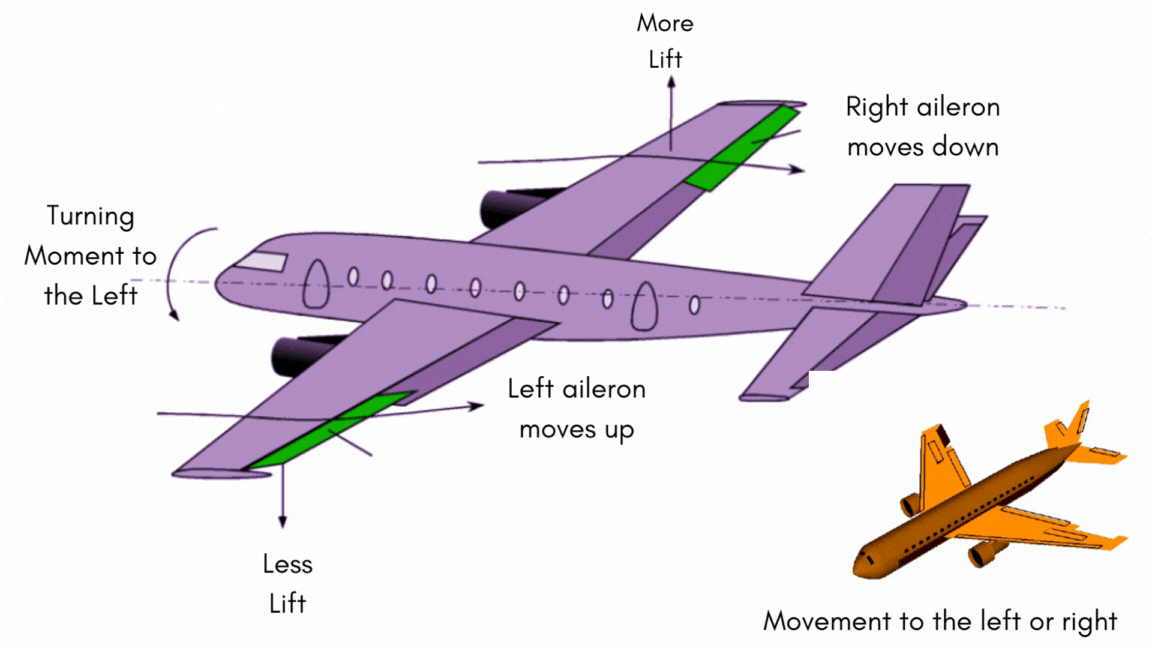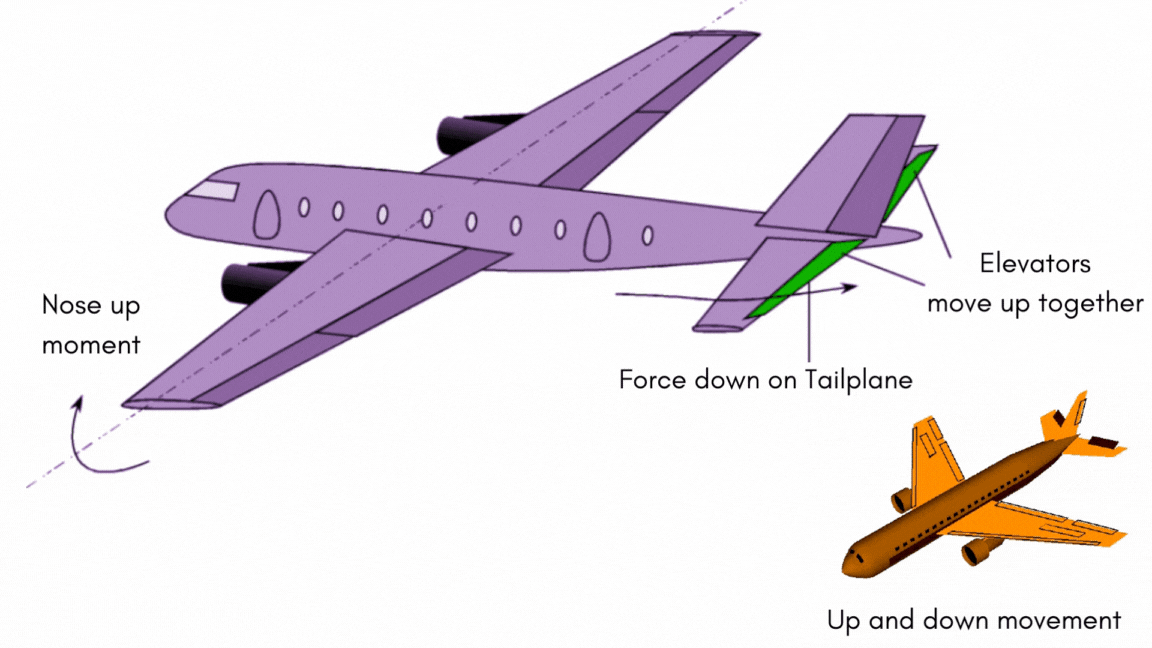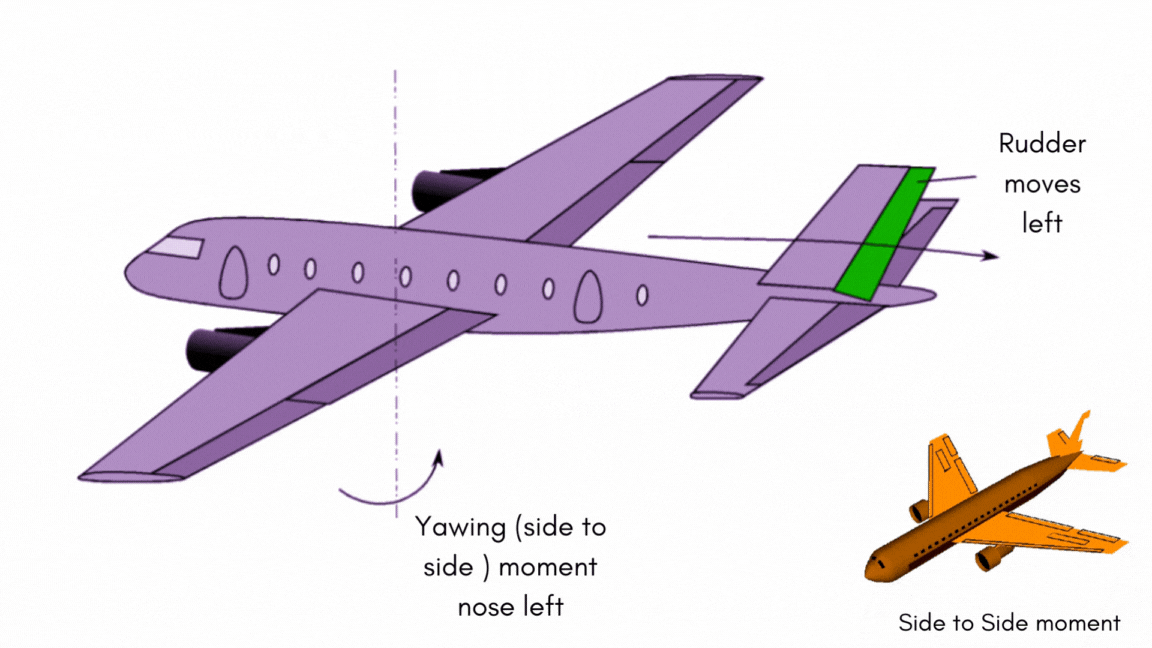Control Surfaces: The Key to Aircraft Maneuverability and Stability
Aircraft are capable of defying gravity and aviating through the sky. However, this remarkable ability to fly wouldn’t be possible without the precise manipulation of control surfaces that enable the finesse and maneuverability of these flying machines. This comprehensive guide will explore the primary and secondary flight control surfaces, their functionalities, and how they work together to ensure a safe and controlled flight. So, fasten your seatbelts and descend into the world of aircraft flight control surfaces.
To discover the flight control system and its impacts on the flight, you first need to understand what the center of gravity is.
The center of gravity, or CG, is simply a fixed point within the aircraft where the aircraft would balance. It is the point at which the aircraft will rotate in three dimensions, known as axes of movement.
The longitudinal axis is drawn from the tail to the nose (along the length).
The lateral axis is drawn parallel to the wings (along the width).
The vertical or normal axis is drawn from top to bottom (along the height).

Primary Control Surfaces: Directing Aircraft Movement
The primary flight control surfaces are the essential components that allow pilots to control the direction and attitude of the aircraft during flight. These surfaces consist of ailerons, elevators, and rudders, each responsible for maneuvering the airplanes around a specific axis of rotation.

Ailerons: Mastering Roll
The ailerons are located on the outboard trailing edge of each wing and play a vital role in controlling the aircraft’s roll. By moving the control column or control stick, the pilot can adjust the position of the ailerons. When the pilot moves the controls, one aileron deflects upward and the other downward, which creates a difference in lift between the wings. The one with the aileron down will have increased lift, and the other with the aileron up will have decreased lift. This asymmetrical lift causes the aircraft to roll about its longitudinal axis, facilitating smooth turns during flight. An opposite motion is applied to return the airplane to a straight flight.

Elevators: Navigating Pitch
The elevators, mounted on the fixed horizontal stabilizers, control the aircraft’s pitch. They enable the plane to move along its lateral axis, allowing it to climb or descend. Manual or autopilot input adjusts the elevators by raising or lowering the aircraft’s tail surface. When the control panel moves forward, the elevator deflects downward, increasing lift for the tail surface and causing the nose to pivot downwards. Conversely, pulling the control panel back results in an upward elevator deflection, raising the nose.

Rudder: Governing Yaw
The rudder, situated at the tail part of the vertical stabilizer, enables the pilot to control the yawing movement of the aircraft. Contrary to its name, the rudder is primarily not used for steering the aircraft directly. Instead, it counteracts the adverse yaw produced during turns or compensates for engine failure on multi-engine aircraft. The simple way to understand this is to assume an airplane is in a balanced position on a string, and if you were to step up to the rudder and push it as badly as you could toward the left, what do you think would happen? The airplane’s tail would move to the left, and the nose of the aircraft would move to the right. The rudder is used in coordination with the ailerons to turn the airplanes. Directed by the rudder pedals in the cockpit, the rudder ensures smooth directional control along the vertical axis.

Secondary Flight Control Surfaces: Enhancing Aircraft Performance
While the primary flight control surfaces handle the fundamental movements of the aircraft, the secondary flight control surfaces enhance performance characteristics and aid in specific flight conditions. These surfaces include spoilers, flaps, slats, and air brakes, each serving a unique purpose in modifying the aircraft’s aerodynamics.

Flaps: Adapting Lift and Drag
Flaps, categorized as high-lift devices on airplanes, are located at the trailing edge of the wings. Let’s peek at the cross-section of the wing and flaps in detail. Flaps can only extend downward; as they extend, the camber of the wing increases, providing more lift and slower flight capabilities. Pilots can adjust the position of the flaps to control the lift and drag generated by the wings. By extending the flaps, trailing edge flaps alter the wing’s shape, modifying the lift and drag forces acting upon the aircraft. Flaps will have more than one angle of deflection and are especially useful during short-field take-off and landings, where control at low speeds is crucial. While take-off flaps extend to a lesser angle, while landing, they extend to a maximum angle, providing high lift at low velocities.

Slats: Enhancing Lift and Control
Located mid-to-outboard on the leading edge of the wings, also classified as high-lift devices like flaps, slats can only extend downward; as they extend downward, the wing’s camber increases, and so the lift also increases. By increasing the wing’s surface area, slats allow for improved lift generation and control during slow flight. These aerodynamic features are particularly beneficial during short-field take-offs and landings, where maintaining control at low speeds is critical.

Spoilers: Managing Lift and Braking
Spoilers located on the fuselage or the top side of the wing serve multiple purposes and can only extend upwards. These small panels, also named lift dumpers, are mainly used to reduce lift and are deployed by disrupting the airflow over the wing. When deployed, they increase vertically from the wing and break the lift. By decreasing lift, spoilers allow for efficient braking during landing and augment the aileron function during roll control. Additionally, spoilers can be deployed symmetrically on each side of the aircraft to enhance wheel brake efficiency, aiding in deceleration during ground operations.

Air Brakes: Slowing Down in Style
Air brakes are employed to slow down the aircraft by increasing drag. Typically deployed on approach and after landing, air brakes extend out from the surface and disrupt the airflow, resulting in a substantial increase in drag. Unlike spoilers, air brakes are specifically dedicated to reducing speed during flight, providing pilots with an effective means of deceleration.
Tabs

Trim Tabs: Achieving Balance
Trim tabs are small, hinged surfaces installed on the trailing edge of primary flight control surfaces. They work by reducing the force required to move these control surfaces, allowing pilots to achieve a balanced and stable flight condition. By adjusting the position of the trim tabs, pilots can maintain the desired flight attitude with minimal control input, resulting in a more comfortable and efficient flight experience.
Balance Tabs: Minimizing Control Effort
Similarly to trim tabs, balance tabs are located on the trailing edge of primary flight control surfaces. These tabs are linked to the control surface and move in the opposite direction to reduce the force required to move the control surface. The tabs deliver an additional aerodynamic force to maintain the control surface in its desired position. By assisting the pilot in overcoming control forces, balance tabs ensure smoother and more precise control inputs, enhancing the overall maneuverability of the aircraft.
Servo Tabs: Powering Control
Servo tabs are visible on the trailing edge of primary flight control surfaces. These tabs are directly linked to the flight control input device, such as the control column or control stick, and move in the same direction as control surfaces. They can act as primary or backup means of control, aerodynamically positioning control surfaces that would otherwise require excessive force to move manually. By aerodynamically placing the control surfaces, servo tabs enhance the responsiveness and effectiveness of flight control inputs.
The intricate system of flight control surfaces is what allows aircraft to navigate the skies with precision and grace. From the primary control surfaces that govern the essential movements to the secondary control surfaces that enhance performance and control, these control surfaces play a vital role in ensuring a safe and controlled flight. So, the next time you board an aircraft, take a window seat and witness these control surfaces of the aircraft to appreciate the marvels of engineering that enable these magnificent machines to conquer the skies.
